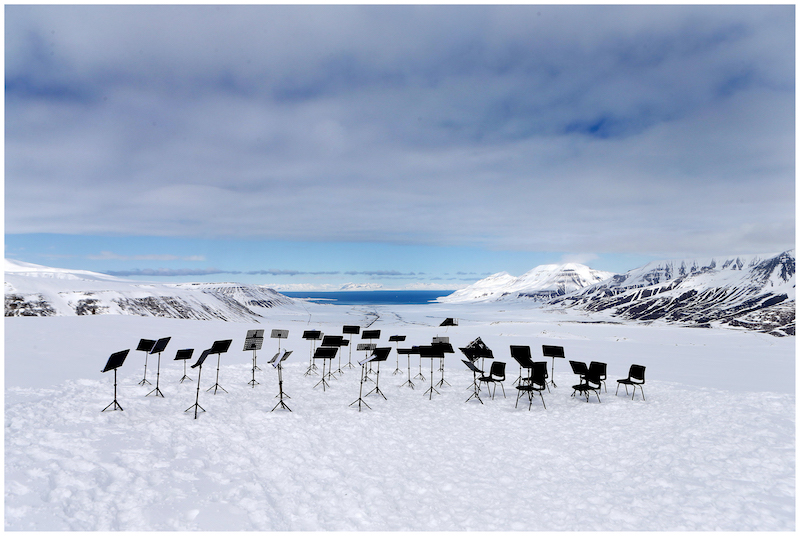In 1926, something extraordinary happened on the Faroe Islands, a tiny archipelago marooned between the Norwegian Sea and the North Atlantic. En route to Iceland, the Hamburg Philharmonic Orchestra steamed towards the island of Streymoy and docked at the Faroese capital, Tórshavn. Hours later, the orchestra presented a concert in a large warehouse attended by hundreds of the town’s 15,000 inhabitants. “The music glided like a huge, well-oiled machine,” wrote the Faroese novelist William Heinesen in a fictionalised account of the performance from his most important book, The Lost Musicians; “it was like a furious colossus moving on lightly tripping feet.”
 Photo from the Arctic Philharmonic Symphony Orchestra © Yngve Olsen Saebbe
Photo from the Arctic Philharmonic Symphony Orchestra © Yngve Olsen Saebbe
The Faroese had got their first taste of a live symphony orchestra and were determined it would not be their last. The Lost Musicians paints a moving picture of a populace bound together by a love of music in the first decades of the 20th century – a community where everyone sang, many played instruments and family members would occasionally join together in the private realisation of a Beethoven quartet.
The musical prowess of the...










Comments
Log in to join the conversation.